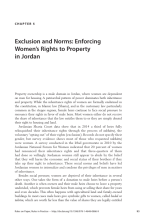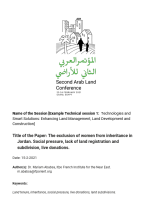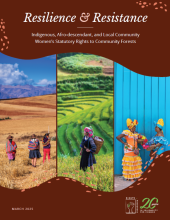Land Library
Welcome to the Land Portal Library. Explore our vast collection of open-access resources (over 74,000) including reports, journal articles, research papers, peer-reviewed publications, legal documents, videos and much more.
/ library resources
Showing items 1 through 9 of 2796.Climatewash: The World Bank’s Fresh Offensive on Land Rights reveals how the Bank is appropriating climate commitments made at the Conference of the Parties (COP) to justify its multibillion-dollar initiative to “formalize” land tenure across the Global South.
Sustainable land management (SLM) plays a pivotal role in land restoration and in achieving Land Degradation Neutrality. Despite steady efforts by governments and international development agencies to promote SLM, its rate of adoption remains low.
Property ownership is a male domain in Jordan, where women are dependent on men for housing. A patriarchal pattern of power dominates both inheritance and property.
A patriarchal pattern of power dominates both inheritance and property in Jordan. This pattern affects women, but also the youth - which is much less studied.
This report provides a critical update to the 2017 Rights and Resources Initiative (RRI) analysis Power and Potential. It evaluates the extent to which national laws, as of 2024, recognize the specific community forest rig
Carbon projects often impact lands managed by communities with insecure or informal tenure rights, especially in Africa and Asia, where carbon markets are expanding rapidly. Nearly 80% of land managed by Indigenous Peoples and local communities in these regions lacks formal recognition.
The study on collective tenure rights and climate action in sub-Saharan Africa aims to consolidate and analyse the state of the evidence on how tenure arrangements – in particular collective ownership and management of forests operating in complex systems of contingent factors – impact forest con
Land is being degraded rapidly worldwide. Our current agricultural practices are causing soils worldwide to be eroded up to 100 times faster than natural processes replenish them.
Los sistemas alimentarios y las estructuras agrarias han cambiado mucho a nivel global en las últimas décadas, con lo que han creado o reforzado algunas tendencias en el agro.








